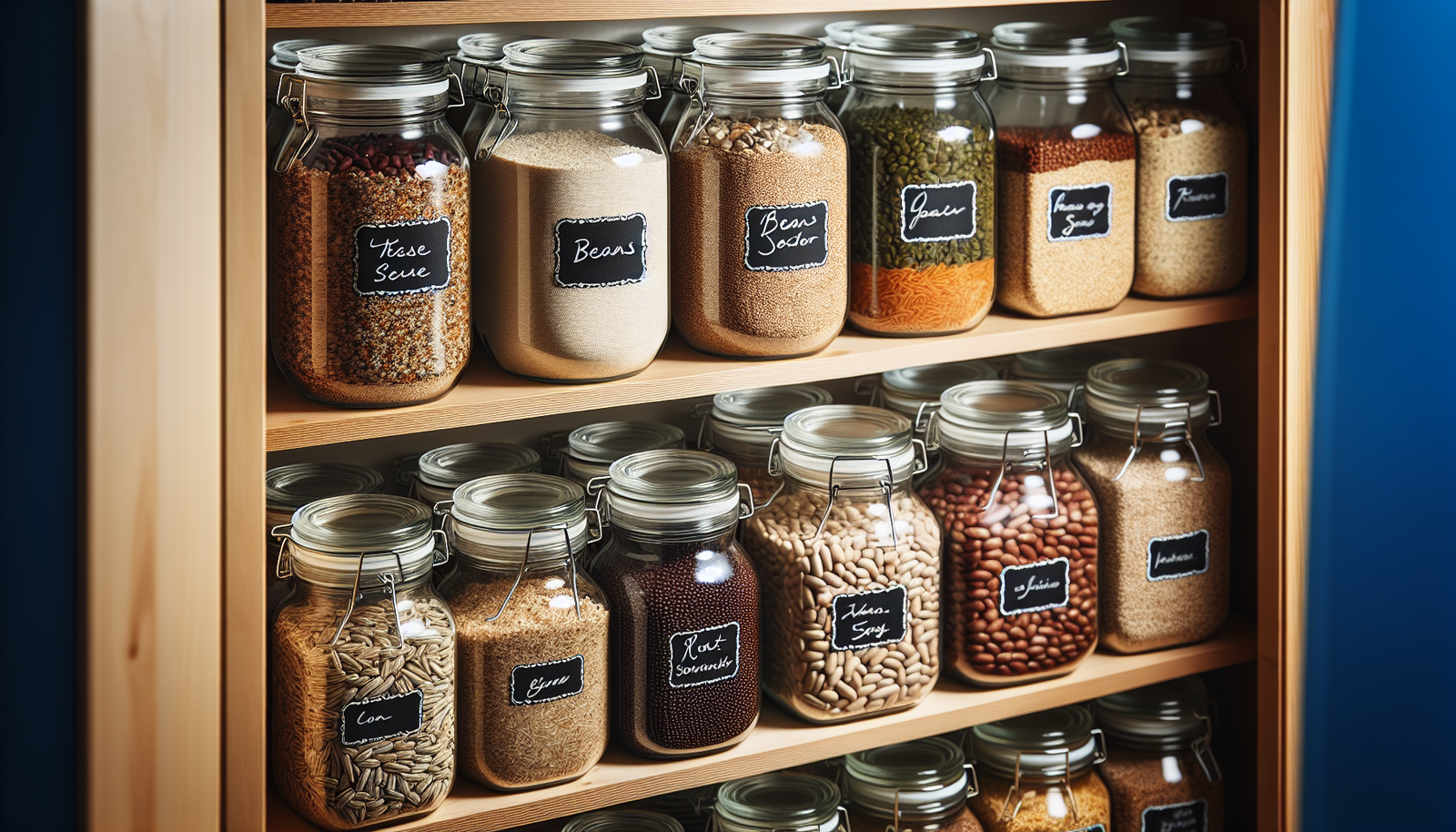
Best Ways to Store Grains and Beans for Long-Term Use
Grains and beans are pantry staples, but to keep them fresh for long-term use, proper storage is key. This guide provides tips on how to store dried grains and beans in airtight containers, protecting them from moisture, pests, and air exposure.
Why Long-Term Storage of Grains and Beans is Important
Long-term storage of grains and beans is crucial for maintaining a reliable food supply. These staples provide essential nutrients and energy, making them a vital part of any pantry. Proper storage ensures they remain fresh, nutritious, and safe for consumption over extended periods.
How Moisture and Air Affect Grains and Beans
Moisture and air are the archenemies of grains and beans. Excess moisture leads to mold growth, while air exposure causes oxidation. Both processes degrade the quality of these foods. To combat these issues, it’s essential to understand how to control the environment where grains and beans are stored. Moisture levels should be kept low, while ensuring a tight seal to keep air out. This preserves the nutritional value and taste.
Common Storage Mistakes
Many people unknowingly make mistakes when storing grains and beans. Some common errors include using non-airtight containers, storing in warm areas, and not rotating stock. These practices can lead to spoilage and waste. Using the right techniques is critical to avoid these pitfalls. It’s important to be aware of and correct these mistakes to ensure a long shelf life.
Understanding the Shelf Life of Dried Grains and Beans
Dried grains and beans, when stored correctly, can last for years. However, the shelf life varies depending on the type of grain or bean, and storage conditions. Factors such as temperature, humidity, and container quality all play a role. By understanding these variables, you can maximize the longevity of your stored goods. This knowledge empowers you to keep your pantry stocked and your food fresh.
Best Practices for Storing Grains
Proper storage of grains involves several key practices. From choosing the right containers to ensuring the environment is ideal, every step is crucial. Implementing these practices will help you maintain the quality and freshness of your grains for the long term.
Using Airtight Containers to Prevent Moisture
Airtight containers are a must for grain storage. They provide a strong barrier against moisture and air. Choose containers made from durable materials like glass or heavy-duty plastic with secure lids. This helps keep the grains safe from external elements. Containers should be stored on shelves or in cabinets, away from potential water sources.
Storing Grains in a Cool, Dark Place
Temperature and light significantly impact grain quality. A cool, dark place is ideal for storage. This environment minimizes the risk of spoilage and nutrient loss. Avoid areas near heat sources or direct sunlight, as these can accelerate degradation. A pantry or a dedicated storage room is often the best choice for maintaining optimal conditions.
Freezing Grains for Extra Longevity
Freezing is a powerful method to extend the shelf life of grains. It halts the growth of mold and insects. Before freezing, ensure grains are in airtight bags or containers to prevent freezer burn. This method is especially useful for bulk purchases, allowing you to enjoy fresh grains for months or even years.
Best Practices for Storing Beans
Beans are a pantry staple that require thoughtful storage. Following best practices ensures they remain fresh and free from pests. With the right approach, your beans will be ready to use whenever needed.
Preventing Pests in Bean Storage
Pests like weevils and moths can wreak havoc on stored beans. Preventing these pests is crucial. Start by inspecting beans for any signs of infestation before storing. Use airtight containers, and consider adding bay leaves or diatomaceous earth to deter pests naturally. Regularly checking your stored beans helps catch any issues early.
Choosing the Right Containers
The right container is key for preserving beans. Choose containers that are airtight and made from materials that won’t leach into the beans. Glass jars, heavy-duty plastic bins, or metal cans are excellent choices. These containers prevent moisture and pests, keeping beans safe and fresh.
Rotating Beans for Freshness
Rotating your bean stock ensures freshness. It involves using older beans first and placing newly purchased beans at the back. This practice prevents beans from sitting too long and losing quality. Regular inspection and rotation help maintain a fresh and reliable supply of beans for your meals.
Conclusion
Storing grains and beans properly is essential for maintaining their quality over time. By using airtight containers and storing them in cool, dry places, you can keep them fresh for months or even years. Following these tips will ensure your pantry is stocked with long-lasting grains and beans, ready for use in a variety of recipes.
FAQ
How should I store grains to keep them fresh for long-term use?
Store grains in a cool, dark, and dry place to maintain freshness. Use airtight containers to protect against moisture and air exposure. Consider adding oxygen absorbers for added longevity.
What containers work best for storing dried beans?
Airtight containers like glass jars, plastic bins, or Mylar bags keep moisture and pests away from dried beans. Ensure containers are food-grade and have secure lids for optimal protection.
How long do grains and beans last in storage?
Grains and beans can last several years if stored properly. Grains typically remain good for 10 to 12 years, while dried beans can last up to 10 years. Both should be kept in ideal conditions for maximum shelf life.
Should I freeze grains or beans for long-term storage?
Freezing grains and beans can kill insect eggs, but is not necessary for long-term storage. Ensure they are stored in airtight containers to avoid moisture, which can lead to spoilage over time.
How do I prevent pests in my grain storage?
To prevent pests, ensure containers are airtight and stored in a cool, dry place. Consider using bay leaves or diatomaceous earth in storage areas as natural deterrents.
How often should I rotate stored grains and beans?
Rotate stored grains and beans every six months to a year. Using the oldest stock first ensures freshness and prevents waste, maintaining a continuous supply of consumables.











